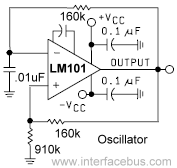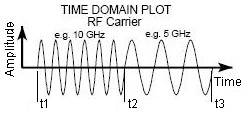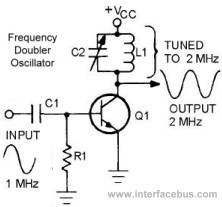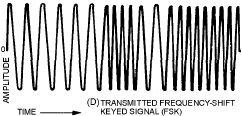Technical Terms used by Engineers
"A"
"B"
"C",
"D",
"E",
"F",
"G",
"H",
"I",
"J",
"K",
"L",
"M",
"N",
"O",
"P",
"Q",
"R",
"S",
"T",
"U",
"V",
"W",
"X",
"Y",
"Z"
'Fa' to 'Fid', 'Fie' to 'Flh', 'Fli' to 'Fq', 'Fr' to 'Fre', 'Fro' to 'Fz',
Fractional T1. In the North American or Japanese hierarchies, the tariffed use of a data rate
corresponding to fewer than the 24 channels served by a T1 line.
Frame. A portion of a message. In data transmission, the sequence of contiguous bits delimited by, and including, beginning and ending flag sequences. The frame is any construction system fitted and united together, designed for mounting or supporting electrical or electronic parts or units. The time period required to transmit both the data, parity and control signals associated with the signal.
Frame Ground. The point a circuit attaches to a metal frame which is used as a grounding point. A bonding point on a piece of equipment that may be exposed to equipment operators.
Frame Rate. The number of frames transmitted or received per unit time.
Frame Relay. An interface protocol for statistically multiplexed packet-switched data communications in which (a) variable-sized packets (frames) are used that completely enclose the user packets they
transport, and (b) transmission rates are usually between 56 kb/s and 1.544 Mb/s (the T-1 rate).
Frame Slip. In the reception of framed data, the loss of synchronization between a received frame and the receiver clock, causing a frame misalignment event, and resulting in the loss of the data contained in the received frame.
Framing. Frame synchronization.
Framing Bit. A bit used for frame synchronization. In a bit stream, a bit used in determining the beginning or end of a frame.
Free-Running. A term describing a circuit that does not require any stimulus to perform its function, as in the free-running multivibrator in the graphic. In addition to the classic circuit diagram an un-labeled compensation capacitor is shown and two by-pass capacitors for the power supplies. |  |
Free-Space Loss. The loss of energy of radio waves caused by the spreading of the wavefront as it
travels from the transmitter.
Freewheeling Diode. A diode connected across an inductive load to carry the current which is proportional to the energy stored by the inductor. Also called a flyback diode.
Frequency. [F] The number of complete cycles per second [oscillations] existing in any form of wave motion,
such as the number of cycles per second of an alternating current. The rate at which the
vector that generates a sine wave rotates. For a periodic function, the number of cycles or events per unit time.
Frequency Aging. The change in oscillator frequency, over time, caused by internal changes in oscillator parameters even when external factors, such as environment and power supply characteristics, are constant.
Frequency Averaging. The process by which the relative phases of precision clocks are compared for the purpose of defining a single time standard.
Frequency Band. A series of contiguous frequencies defined by an upper and lower range. Also see Common Frequency Bands.
Frequency Compensation Network. A circuit modification used to improve or broaden the
linearity of its frequency response. An addition to a circuit to produce a flat response to a particular frequency range.
Frequency Cutoff. The frequency at which the filter circuit changes from an action of rejecting the
unwanted frequencies to an action of passing the desired frequencies. Conversely, the point at which the
filter circuit changes from an action in which it passes the desired frequencies to an action in which it
rejects the undesired frequencies.
Frequency-Determining Network. A circuit that provides the desired response (maximum
or minimum impedance) at a specific frequency.
Frequency Deviation. The amount the frequency varies from the carrier frequency. The difference between the instantaneous frequency of the modulated wave and the unmodulated carrier frequency [frequency modulation].
Frequency Discriminator. A circuit that produces an output voltage proportional to the difference between an input frequency and a fixed reference frequency. Also see RF Frequency Discriminator Component Vendors.
Frequency Distortion. A non-flat or non-linear amplitude response of a circuit to different frequencies. Refer to the Definition of Distortion.
Frequency Diversity. Transmitting (and receiving) of radio waves on two different frequencies
simultaneously.
Frequency-Division Multiplexing. [FDM] The deriving of two or more simultaneous, continuous channels from a transmission medium by assigning a separate portion of the available frequency spectrum to each of the individual channels. Multiplexing that transmits and receives the full 360 degrees of each sine wave. A multiplexing technique in which the channel bandwidth is divided into different frequency sub-channels.
Frequency Doubler. A circuit that doubles the frequency of the input. A Frequency Doubler Circuit [graphic to the right]. A Frequency Doubler circuit may also be called a Second Harmonic Generator or a Frequency Multiplier; however a Frequency Multiplier could generate any harmonic. An RF component or module used to generate twice the frequency, as in Frequency Doubler Manufactures.
Frequency Drift. An un-desired progressive change in frequency with time. An undesired change in the output frequency of an oscillator.
Frequency Guard Band. A frequency band deliberately left vacant between two channels to provide a margin of safety against mutual interference.
Frequency Lock. The condition in which a frequency correcting feedback loop maintains control of an oscillator within the limits of one cycle.
Frequency Meter. A meter used to measure the frequency of an ac signal. An electronic instrument that displays the frequency of an incoming signal. The frequency is determined by comparing the signal to the counter's time base oscillator. [Frequency Meter Manufacturers]
Frequency Mixer. A circuit that accepts two input signals at two different frequencies, and produces an output frequency equal to the difference of the two inputs. [Frequency Meter Manufacturers]
Frequency Modulated Signal. A carrier wave that has been modulated by an information signal. The graphic shows the information signal in blue that has modulated a carrier wave shown in green.
Frequency Modulation. [FM] A signaling method that varies the carrier frequency in proportion to the amplitude of the modulating signal. Angle modulation in which the modulating signal causes the carrier frequency to vary. The amplitude of the modulating signal determines how far the frequency changes, and the frequency of the modulating signal determines how fast the frequency changes. Modulation in which the instantaneous frequency of a sine wave carrier is caused to depart from the center frequency by an amount proportional to the instantaneous value of the modulating signal.
Frequency Multipliers. A circuit that outputs a signal that is an integral multiple of the frequency of the input frequency. Special RF power amplifiers that multiply the input frequency. A circuit that converts an incoming signal to a higher frequency by adding a fixed multiple of cycles or pulses to the signal. Also refer to RF Frequency Doubler Manufacturers.
Frequency Range. A continuous range or spectrum of frequencies that extends from one limiting frequency to another. [see side-bar]
Frequency Response. The measurement of how effectively a circuit or device reacts to different frequencies that are applied to it. The part of a frequency region than can be sensed by a device. The measure of a servos ability to respond to various input frequencies. A circuits gain or loss as a function of frequency.
Frequency-Response Curve. A curve showing the output of an amplifier (or any other device)
in terms of voltage or current plotted against frequency with a fixed-amplitude input signal. A plot of the gain or attenuation of a device, such as an amplifier or a filter, as a function of frequency.
Frequency Scanning. Varying the output frequency to achieve electronic scanning.
Frequency Selectivity. The ability of a circuit to differentiate between signals at different frequencies.
Frequency Shift. Any change in frequency.
Frequency-Shift Keying. [FSK] Frequency modulation somewhat similar to continuous-wave (cw) keying in AM transmitters. The carrier is shifted between two differing frequencies by opening and closing a key. Frequency modulation in which the modulating signal shifts the output frequency between predetermined values. Frequency modulation between two predetermined discrete values termed the Mark and Space frequencies.
Frequency Stability. Refers to the ability of an oscillator to accurately maintain its operating
frequency. The degree to which an oscillating signal produces the same frequency for a specified interval of time [short-term stability, or long-term stability].
Frequency Standard. An oscillator used as a reference source for frequency measurements.
Frequency Synthesis. A process that uses hetrodyning and frequency selection to produce a signal.
Frequency Synthesizer. A frequency source of high accuracy. A device that produces frequencies that are phase coherent with a reference frequency. A bank of oscillators in which the outputs can be mixed in various combinations to produce a wide range of frequencies.












